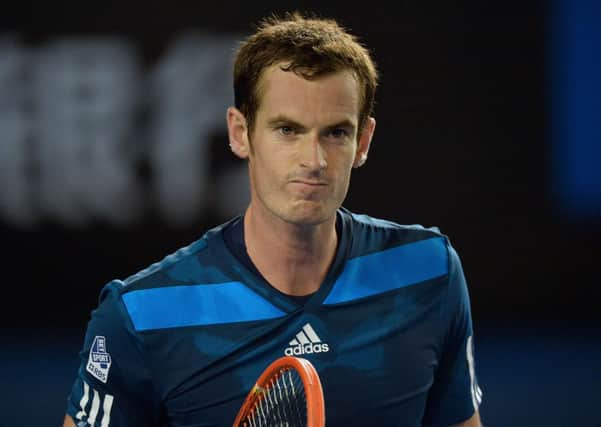Andy Murray back on track despite Australia defeat


Losing is never easy to take, but, in only his seventh match at tour level since his comeback began, he pushed Roger Federer for almost three-and-a-half hours – that is not bad for a bloke who, four months ago, was stuck in bed, unable to move, following back surgery. Of course, he is not back to his best yet and he aches in places he never knew existed before, after competing with the best in the business in a grand slam quarter final, but he is still standing and he is getting better.
The timing of the Australian Open was not great for Murray. He had not played a match since September as he recovered from the surgery and then, when he was fit to play again, there were only a couple of weeks to pack in any matchplay before the Open began. As it turned out, he lost in the second round of Doha and that was it for him.
Advertisement
Hide AdAdvertisement
Hide Ad“I don’t know if this tournament came too early for me,” he said. “If I’d had ten more matches, I don’t know if I would have been tired or if it would have made that much of a difference. It’s hard to prepare for playing these matches at this level because it’s very hard to practise against guys as good as Roger. It’s hard to train at this level and prepare for that.
“So maybe the first slam, regardless of when it was, it was going to be very challenging for me physically and mentally but, you know, it’s a big sign of progress and my back held up fairly well.”
Bizarrely, Murray’s back was the least of his problems as he played Federer. It was a bit sore at times but it was the rest of his body that was struggling to get used to best-of-five set matches again. His serve began to slow down, his movement was becoming a bit laboured and he was looking knackered. But at least he now knows that the operation worked – it is just the rest of him that needs to get match-fit and match-tight.
“I do all the same recovery stuff as I used to on my back,” he said. “I just don’t have to spend as much time with the recovery stuff because it’s obviously improved since the surgery and I just have to monitor it and stay on top of it because it’s pretty early stages still. I played my first match only three weeks ago and I’ve played a lot of tennis since then so I’m happy with the way it’s held up.”
The next big test comes next week at the Davis Cup when Britain face the United States on clay in San Diego. No matter how tired or sore he feels, Murray must make the rapid adjustment from the fast courts in Melbourne to the slower paced surface in California – and it was the slow clay that aggravated his back the most last year.
“It’s not perfect for rehabbing a back surgery,” Murray admitted. “Ideally I’d stay on the same surface. But I always enjoy playing Davis Cup. I just need to look to try and recover now as quickly as possible because matches like this one against Roger would normally take a couple of days to get over. I haven’t played a match like this for a while so it’ll take me a little bit longer to feel good again so I’ll need to take a bit of rest and, obviously, with travel and stuff and adjusting to a new surface, that’s going to be another challenge. Hopefully, I can do that OK.”
Whether he plays all three days of the tie is yet to be decided – Murray is not giving away any team tactics before he gets to the US – and how fit he will feel when he gets there is anyone’s guess. But it is still early days in the Scot’s comeback and there are another ten months of the season to plan for.
His world ranking will slip from No 4 to six or seven after Wednesday’s loss because he failed to defend the 1,200 points he earned last year as a finalist, but there are still points to be gathered in Acapulco at the end of next month and Indian Wells at the beginning of March – and both events are on his favoured hard courts. His comeback has started well and, in theory, should now gather momentum.
Advertisement
Hide AdAdvertisement
Hide Ad“I think it’s been a great Australian Open for Andy Murray,” said Greg Rusedski, who had plenty of back problems in his playing days. “If you look at where he was; he’s been out for three months, he hasn’t played since the Davis Cup in September and he played very well [against Federer], especially at the end of the match. When Federer served in the third set all of a sudden he got more aggressive and he wasn’t as tentative as he was in the first two sets. That’s because he didn’t really know what to expect against the top guys in a proper match.
“By Wimbledon, I think he’ll be back to 100 per cent. If I was to give him a grade I’d say it’s been nine out of ten and an excellent week and a bit for him.”
If anything is going to help dispel Murray’s current disappointment, the thought of being back to his best in time to defend his Wimbledon title ought to be thing to do it.